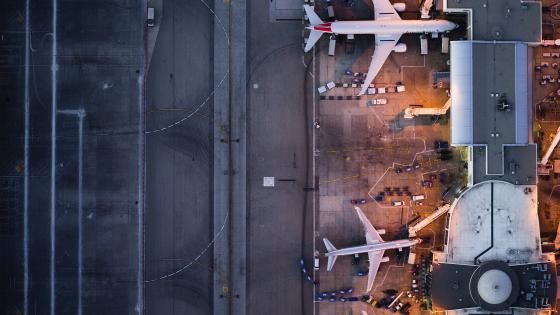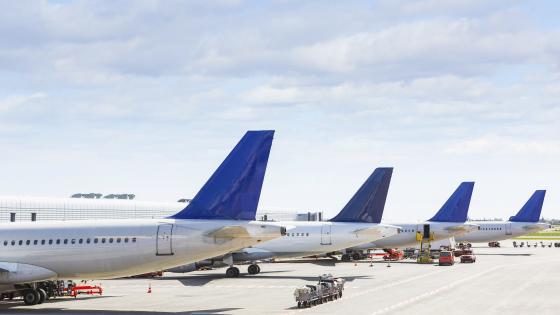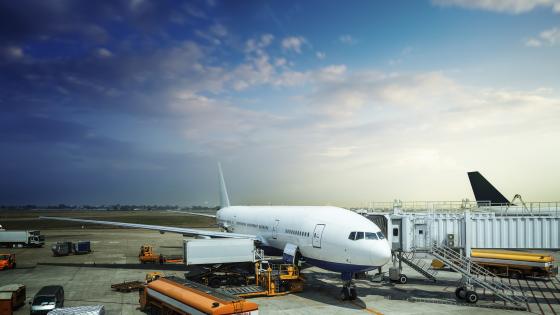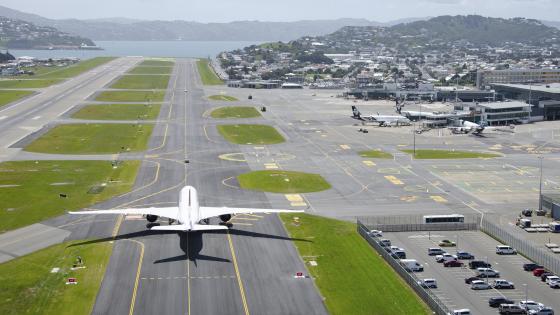In times of disruption it is crucial that airports, airlines and other industry stakeholders pull together, writes Holger Mattig of Amadeus.
Disruption has been a consistent theme during the past several years, as the industry worked hard to deal with the impact of travel restrictions and then to accommodate a rebound in demand. Labour shortages, geopolitical challenges and day-to-day operational issues have all played a role. Estimates of the overall cost of disruption vary, but according to UK-based industry analysts T2RL, the problem could cost airlines alone as much as $60bn or 8% of all airline industry revenues. Given the importance of disruption for airports, airlines, other stakeholders and, crucially, passengers,we believe it’s time to rethink how the situation is managed.

Holger Mattig is responsible for setting the development direction for Amadeus’ airport IT portfolio
Disruption management today
When disruption occurs, airline systems work to rebuild flight schedules and to reaccommodate passengers based on the airline’s priorities. For example, airlines have the tools to understand which passengers have connections, whether they’re an unaccompanied minor, and their own commercial priorities. The necessary computing takes place quickly and can be rolled out easily, so passengers can be rebooked for a suitable alternative.
Airlines can also use data analytics to quickly understand how to best rebuild their flight schedule based on cost and passenger satisfaction priorities. These tools consider where the airline needs its aircraft, crew and passengers to achieve optimal operations based on constraints resulting from disruption.
Sometimes more than 100 systems need to contribute information, and then be updated, when new plans are formulated
Take a simple example of a transatlantic flight being delayed by two hours. Should the airline take the delay on the outbound flight, for which the late arriving aircraft is needed? Or should another aircraft be used to protect that outbound flight, perhaps pushing the delay to a leisure flight rather than a business flight? Will crew go ‘out of hours’ with the new arrangements, will crew be able to connect from one flight to another as needed and what about the impact on maintenance plans?
Already you can see that managing even a simple disruption scenario at the airline level is a very complex task. In our view, most airlines have more than 50 different legacy systems that are affected when disruption happens today. Sometimes more than 100 systems need to contribute information, and then be updated, when new plans are formulated. And we haven’t even talked about the role of airports and their systems yet!

Traditional operations management means that ground handling teams rarely know in advance if a flight is delayed
Disruption management tomorrow
Any effective response to disruption means the airport must also factor in the new schedule of each airline to plan how to allocate landing and take-off slots as well as resources such as stands and gates. Responding to disruption requires continual information exchange and ongoing negotiation between an airport and its airlines if they are to achieve the best possible outcome.
Currently this process of aligning the airport’s plans and resources to a new airline schedule is largely manual. Airport operational control centres, and the airline service managers that staff them, are in email and phone communication with airlines in order to negotiate the allocation of resources and to create a revised plan. This slows the response and misses the opportunity to harness artificial intelligence (AI) to recommend optimal solutions to complex disruption scenarios. At Amadeus we are in the process of transforming this area of the industry with a common data foundation.

Legacy systems can add to the challenge when airports and airlines are faced with disruption
We already provide airline disruption management systems to rebuild airline schedules and recommend passenger reaccommodation options. Work is ongoing to build deep links to our airport solutions, including our Airport Operational Database (AODB) and A-CDM Tools like Pre-Departure Sequence Manager, and the optimisers that intelligently allocate slots, stands and gates. Our vision sees airline and airport optimisers ‘talking with one another’, so they can negotiate the best possible response to disruption in near real time, based on the complete picture.
These decisions, negotiated by people today, are incredibly complex. The impact on passengers, regulatory requirements (is a flight carrying medical equipment? if so, it must be prioritised), airline service level agreements and airport revenue implications all factor when calculating how best to reallocate resources during disruption.
Wouldn’t it be better if the airport also knew that the flight was late but attempting to make-up time?
A simple example
Currently, when a transatlantic flight is running 60 minutes late, the airline knows early, but the airport only finds out as it approaches to land. If the flight is carrying connecting passengers, the airline might choose to ask the pilot to burn additional fuel to save 40 minutes from the journey time. But if they do, it’s quite likely that ground handlers at the airport won’t be ready to receive it.
Wouldn’t it be better if the airport also knew that the flight was late but attempting to make-up time? Then the ground handling agents could be ready while the airport would also have sufficient time to change the aircraft’s gate allocation, perhaps saving a further 20 minutes from passenger connections within the terminal. Common technology platforms that share information between airlines, airports and other stakeholders can absolutely solve such problems, supporting everyone to achieve improved outcomes for passengers.
In the event that missed connections can’t be avoided, technology can be used to help airlines intelligently resell unused seats. Imagine that a business class passenger does miss a connection. Why not offer a reduced-price upgrade at the last minute to a passenger travelling in economy?
Another focus is ensuring that passengers can self-serve in the event of disruption. Today passengers typically queue, either in person at the airline service desk or virtually at the airline call centre. Unsurprisingly, these channels often struggle to cope during peak periods. That’s why we’re working to ensure passengers can choose their own disruption solutions at kiosks, online or via their mobile devices.

An airport needs the ability to collect data from its various systems if it is to support recovery planning during disruption
The role of AI
Any future-looking system designed to collaboratively manage disruption needs to be able to learn and improve. An airport therefore needs the ability to collect data from its various systems if it is to enable operational analysis, prediction and to support recovery planning during disruption.
Not only does this mean an airport can learn how the choices and prioritisations are made during disruptions, it also means that it can begin to predict and mitigate future disruption. This could, for example, involve consuming external weather data to understand when a snowstorm is approaching and combining it with knowledge of past scenarios to propose new operational plans during periods of expected disruption.

New Zealand’s Wellington Airport installed Amadeus’ Airport Cloud Use Service in 2022, simplifying how agents access airline systems
This capability means disruptive situations can be handled predictively, allowing the airport to pre-warn a specific airline, up to 48 hours in advance, that it may only have half the usual number of slots. It is this advanced notice that matters. Passengers can be alerted before they travel to the airport, with options to rebook. Rather than a ground handler being notified three hours before snow falls, they can be ready with additional de-icing trucks well in advance.
Disruption is the clearest example of why our industry needs to work more closely and collaboratively. If we place passengers first, if we breakdown silos, there is a tremendous opportunity for airlines and airports to rethink how the industry handles disruption.
